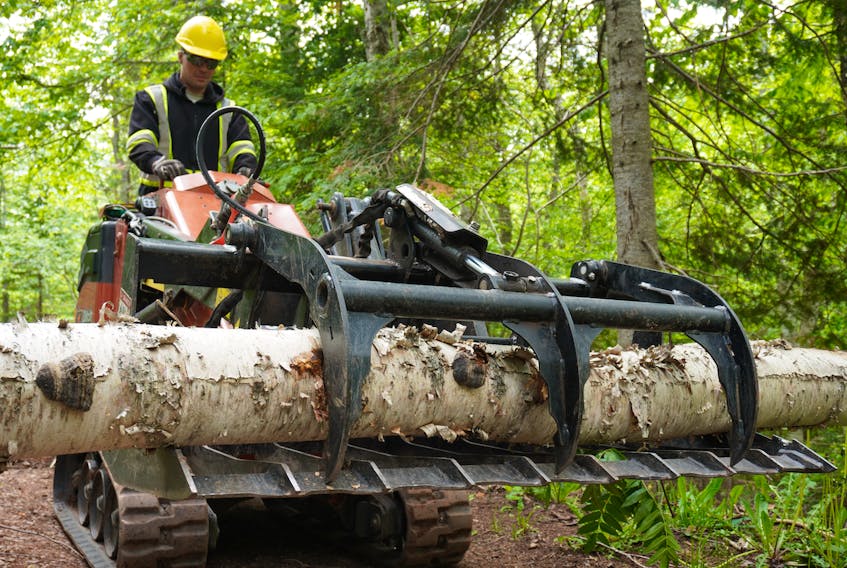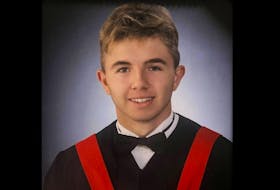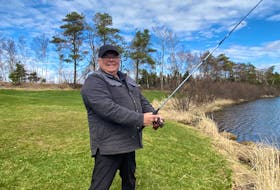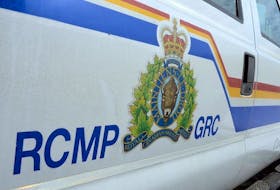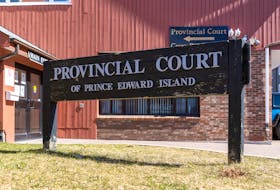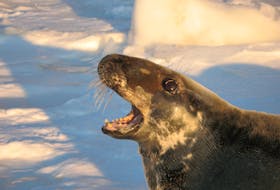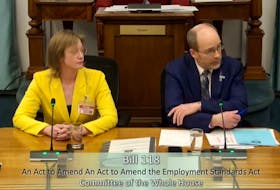CAVENDISH, P.E.I. — Darren Doiron had never seen anything like the damage caused by post-tropical storm Dorian.
"Not that widespread, that's for sure," he said.
The owner of Doiron's Tree Service in Summerside has been following the trail of countless trees left behind after Dorian's heavy winds blew across parts of Prince Edward Island last September.
"There wasn't much time for rest," he said.
"It was really overwhelming."
Nine months later, most of the trees that posed a danger or were a noticeable eyesore have been taken care of, but Doiron doesn't expect to be finished anytime soon.

For instance, many seasonal residents may not have seen their P.E.I. properties since Dorian swept through, he said.
Because of the COVID-19 pandemic, some of these residents might not be visiting the Island this year, meaning any trees that Dorian pushed down onto their yards could go unnoticed for a while yet.
"Just one tree at a time," Doiron said.
One region where his business has spent plenty of time since the storm was along the province's northern shore.
Many properties were damaged heavily by Dorian, including the P.E.I. National Park.
WATCH: Some of the damage left behind along the Balsam Hollow Trail by post-tropical storm Dorian and the progress so far in the cleanup
Brad Romaniuk, resource conservation manager with Parks Canada, said they started the tree removal process on their Cavendish-region parks shortly after the storm and were mostly finished as of June this year. The impact was significant, and things look very different now, he said.
His staff is currently focusing on repairing damaged sites and structures, such as the bridges along the Balsam Hollow Trail. Romaniuk is also looking forward to starting the next step – replanting trees.
"(We'll) see that forest regenerate in a way that's both resilient and representative of the forest of P.E.I.," he said.

P.E.I.'s forests are largely Acadian forests, which contain a diverse population of both hardwood and softwood tree species. Due to early settlers chopping down these trees, Cavendish's forests consisted largely of white spruce trees leading up to Dorian, he said.
It was the white spruces that took the biggest hit, and Romaniuk noted this was likely to occur soon and naturally anyway. Dorian simply accelerated the process.
"Most of them were at the end of their life cycles already," he said. "It just signals a change in the ecosystem."
AT A GLANCE
Parks Canada has been focusing much of its post-Dorian cleanup efforts on four of its properties that were hit hard by the post-tropical storm, including:
- Green Gables Heritage Place
- Cavendish Campground
- Cavendish Grove
- Cavendish Beach
The benefits of replanting a more Acadian forest is that the tree variety would allow for wider biodiversity of animals and would be more resilient, he said.
"Many of our Acadian forests didn't sustain as much damage," he said. "There were still impacts but not to the same degree."
The first phase of replanting was supposed to start this spring but was delayed due to COVID-19. While Romaniuk expects to start by fall, it could take anywhere from weeks to months, and it will certainly be monitored for years, he said.

Not all of the fallen trees have been removed. Many are being left in safe locations to help illustrate the extent of Dorian's damage to visitors as well for the natural benefits of letting them rot out.
"They'll provide organic composition for new species coming in," Romaniuk said.
Outside of the national park, there's still a fair amount of cleaning up to do.
Matthew Jelley, mayor of the Resort Municipality which includes Cavendish, said that its focus is still on straightening up properties – namely Swimming Rock park in Stanley Bridge and the Montgomery Park in Cavendish.
But much of the region's clean-up costs are on the onus of individual property owners.

"The reality is that the impact of the storm was quite devastating. And then to be followed by the impact of COVID-19 – it has been a difficult period for our community."
Jelley believes it takes an optimistic person to plant a tree because it's a long time before they would see any results.
Because of the region's high dependency on tourism, the appearance of its properties and the region as a whole is important, so the community must persevere.
"We can't put the trees back where they were, unfortunately, but we can do our best to clean up and to prepare for new growth."
"Despite all the challenges, it's in our nature in Cavendish to be as hospitable and welcoming as we can be," he said.
"We can't put the trees back where they were, unfortunately, but we can do our best to clean up and to prepare for new growth."
The Resort Municipality hopes to start helping the replanting process by co-ordinating with Parks Canada and community members soon, he said.
Daniel Brown is a local journalism initiative reporter, a position funded by the federal government.

